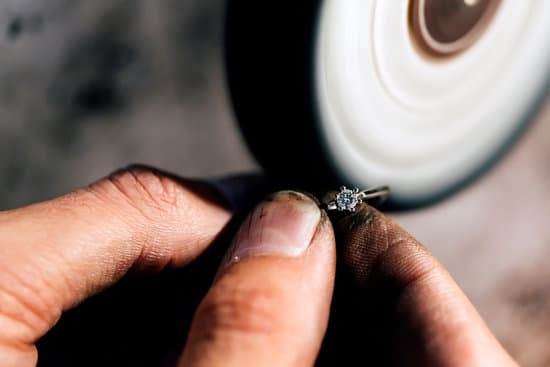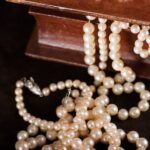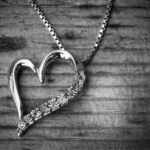Freshwater pearls have long been cherished for their lustrous beauty and timeless elegance, making them a sought-after gem for jewelry enthusiasts. In the world of jewelry, there is a distinction between what is considered fine jewelry and fashion jewelry.
The question arises: are freshwater pearls considered fine or fashion jewelry? This article aims to explore the significance of freshwater pearls in jewelry making and delve into the debate of whether they belong in the category of fine or fashion jewelry.
Freshwater pearls hold a rich history that dates back centuries, with their cultural significance varying across different societies and regions. From their origins to the evolution of their use in jewelry, the story of freshwater pearls is one that reflects their enduring appeal and versatile nature in adornment. Understanding these aspects contributes to the appreciation of freshwater pearls as a valuable asset in the jewelry industry.
In addition to exploring the history and cultural significance of freshwater pearls, it is important to examine their unique characteristics that distinguish them from other types of pearls. From differences in appearance to practical benefits in jewelry design, identifying genuine freshwater pearls becomes crucial in determining their place within the realm of fine or fashion jewelry.
Furthermore, defining what constitutes fine jewelry versus fashion jewelry provides a context for evaluating where freshwater pearls stand in today’s market and fashion landscape.
The History of Freshwater Pearls
Freshwater pearls have a rich history that dates back to ancient civilizations, where they were highly prized for their natural beauty and rarity. Cultured in mussels rather than oysters, freshwater pearls are known for their unique luster and variety of shapes and colors. In many cultures, these pearls symbolize purity and femininity, making them a popular choice for jewelry throughout history.
- The Origins and Cultural Significance of Freshwater Pearls
- Freshwater pearls have been harvested in China for over 2,000 years, with the country being one of the largest producers of these exquisite gems. In ancient China, freshwater pearls were believed to represent good luck and prosperity, making them a cherished adornment among the nobility.
- In addition to China, freshwater pearls have also been discovered in various bodies of water across the globe, including Japan, Europe, and the United States. Each region has its own cultural significance attached to freshwater pearls, further adding to their allure in jewelry.
- How Their Use in Jewelry Has Evolved Over Time
- Historically, freshwater pearls were often used in traditional jewelry pieces such as necklaces, earrings, and bracelets worn by royalty and members of high society. As jewelry-making techniques advanced over time, freshwater pearls became more accessible to the general population.
- Today, freshwater pearls are not only used in classic and elegant jewelry designs but also incorporated into modern and trendy accessories. Their versatility allows for creativity in crafting both timeless heirlooms and fashionable statement pieces.
Understanding the unique origins and cultural significance of freshwater pearls provides insight into how these gemstones have evolved from symbols of wealth and prestige to beloved accessories worn by individuals from all walks of life. Additionally, their rich history contributes to the ongoing debate about whether they are considered fine or fashion jewelry in contemporary fashion aesthetics.
Characteristics of Freshwater Pearls
Freshwater pearls are considered fine jewelry due to their timeless elegance, natural iridescence, and versatility in jewelry design. These pearls are formed in non-saline environments, such as lakes and rivers, making them distinct from saltwater pearls.
Despite their origins, freshwater pearls have gained widespread admiration for their beauty and luster, often adorning high-quality jewelry pieces crafted by renowned designers. Their unique characteristics set them apart in the world of fine jewelry, making them a sought-after choice for those looking for sophistication and refinement in their accessories.
One of the primary reasons why freshwater pearls are classified as fine jewelry is their exquisite appeal. The enchanting luster and smooth surface of freshwater pearls make them highly desirable for creating luxurious necklaces, earrings, bracelets, and rings.
Additionally, their availability in a wide range of shapes and colors adds to the allure of freshwater pearl jewelry. Whether it’s the classic white pearls or more unconventional shades like lavender or peach, these variations offer an array of options for creating bespoke fine jewelry pieces that cater to individual preferences.
The durability and relative affordability of freshwater pearls also contribute to their standing as fine jewelry. Unlike other types of delicate gemstones or metals that require careful handling, freshwater pearls are relatively resilient and can withstand everyday wear.
This characteristic makes them practical for crafting enduring heirloom pieces that can be passed down through generations without losing their innate charm. Furthermore, the accessibility of freshwater pearls at varying price points makes them an attractive option for individuals seeking high-quality jewelry without an exorbitant price tag.
| Freshwater Pearls’ Characteristics | Classification |
|---|---|
| Elegance and Versatility | Fine Jewelry |
| Exquisite Appeal | Fine Jewelry |
| Durability and Affordability | Fine Jewelry |
Fine Jewelry vs Fashion Jewelry
When it comes to the classification of jewelry, it is essential to understand the distinction between fine and fashion jewelry. Fine jewelry typically refers to pieces that are made from precious metals such as gold, platinum, or silver, and often incorporate high-quality gemstones such as diamonds, sapphires, or rubies.
On the other hand, fashion jewelry is typically more affordable and can be made from a variety of materials including brass, copper, or even plastic, and may incorporate synthetic stones or beads.
Are Freshwater Pearls Considered Fine or Fashion Jewelry?
The classification of freshwater pearls in the realm of fine versus fashion jewelry is a topic of debate within the jewelry industry. Traditionally, freshwater pearls were considered more in line with fine jewelry due to their natural origin and timeless appeal. However, with advancements in pearl cultivation techniques and the availability of cultured freshwater pearls at more accessible price points, they have increasingly become associated with fashion jewelry as well.
Just like any other type of jewelry, whether freshwater pearls are considered fine or fashion ultimately depends on various factors such as their quality, setting, and overall design. While some may view a simple strand of freshwater pearls as classic and elegant fine jewelry suitable for formal occasions, others might see a contemporary piece featuring geometric designs or mixed media elements as fashionable statement pieces.
The Value of Freshwater Pearls in Jewelry
Freshwater pearls are often valued for their natural beauty and lustrous appearance, making them a desirable choice for jewelry enthusiasts. These pearls are considered to be a timeless classic in the jewelry industry, adding elegance and sophistication to any piece of jewelry they adorn. But the question remains: are freshwater pearls considered fine or fashion jewelry?
To understand the value of freshwater pearls in jewelry, it is essential to distinguish between fine and fashion jewelry. Fine jewelry is typically crafted with high-quality materials such as precious metals and genuine gemstones, while fashion jewelry may incorporate a wider range of materials including semi-precious stones, plated metals, and synthetic gems.
Factors that determine whether freshwater pearls fall into the category of fine or fashion jewelry include their quality, origin, and market demand. Genuine freshwater pearls with symmetrical shapes, smooth surfaces, and rich luster are often considered to be fine jewelry due to their high-quality characteristics. On the other hand, fashion jewelry may feature freshwater pearls in more creative designs and settings, appealing to a broader consumer base.
The perception and market value of freshwater pearls also play a significant role in defining their status in the world of jewelry. While high-end designers may create exquisite pieces featuring freshwater pearls as part of their fine jewelry collections, mainstream brands and independent designers utilize these pearls in fashion-forward designs that cater to different styles and budgets.
- High-quality craftsmanship
- Origin of the pearls
- Overall market demand
Styling With Freshwater Pearls
Freshwater pearls hold a unique status in the world of jewelry, offering a timeless and elegant appeal that transcends fashion trends. Whether they are considered fine or fashion jewelry depends on how they are styled and incorporated into different looks. When it comes to styling with freshwater pearls, there is great flexibility in terms of creating both classic and contemporary ensembles.
One of the reasons freshwater pearls have become a staple in fashion is their versatility. They can be used to achieve a variety of looks, from sophisticated and refined to modern and edgy.
For formal occasions, freshwater pearl necklaces and earrings are often chosen for their understated elegance, adding a touch of glamour without overshadowing the attire. On the other hand, fashion-forward individuals have embraced the trend of mixing freshwater pearl jewelry with more casual or eclectic clothing pieces to create a chic juxtaposition.
Celebrities and fashion icons have been influential in popularizing the use of freshwater pearls as statement accessories. From red carpet events to street style moments, these luminaries have demonstrated how freshwater pearls can elevate an outfit regardless of its overall aesthetic. Their ability to complement different styles while exuding an aura of sophistication has solidified freshwater pearls as a sought-after choice for those seeking jewelry that effortlessly transitions between high fashion and everyday wear.
| Freshwater Pearls Styling Tips | Celebrity Inspiration |
|---|---|
| Pairing a single-strand choker necklace with an off-the-shoulder dress for a timeless look | Audrey Hepburn’s iconic pearl necklace in “Breakfast at Tiffany’s” |
| Mixing oversized baroque pearl earrings with an avant-garde ensemble for a bold statement | Rihanna’s red carpet appearances adorned with unconventional pearl jewelry |
| Layering multiple bracelets featuring small freshwater pearls with stackable bangles for bohemian flair | Influencers like Olivia Palermo showcasing the art of layering pearl accessories |
Caring for Freshwater Pearls
Maintenance and Cleaning Tips
Proper care and maintenance are essential for preserving the luster and quality of freshwater pearl jewelry. To keep freshwater pearls looking their best, it is important to gently wipe them with a soft, damp cloth after each wear to remove any residue or oils from the skin. Avoid using harsh chemicals, abrasive cleaners, or ultrasonic jewelry cleaners, as these can damage the pearls’ delicate surface.
Storing Freshwater Pearl Jewelry
When not being worn, freshwater pearl jewelry should be stored in a soft pouch or lined jewelry box to prevent scratching and damage. It’s crucial to keep individual pieces separate from one another to avoid potential nicks or abrasions. Additionally, storing pearls away from other jewelry items can prevent accidental damage from harder gemstones or metals.
Preventative Measures
In addition to regular cleaning and proper storage, taking preventative measures can help maintain the integrity of freshwater pearl jewelry. Refrain from exposing pearls to excessive heat or direct sunlight for prolonged periods, as this can cause dehydration and cracks in the nacre. It’s also advisable to avoid wearing pearls while swimming or engaging in activities that may expose them to harsh chemicals or acids.
Are freshwater pearls considered fine or fashion jewelry? The answer lies within their quality, craftsmanship, and market value. While some freshwater pearl pieces may be categorized as fashion jewelry due to their affordability and accessibility, high-quality freshwater pearls with excellent luster and minimal blemishes are often sought after for fine jewelry creations.
Conclusion
In conclusion, freshwater pearls have a rich history and cultural significance that has cemented their place in the world of jewelry. Their unique characteristics and benefits make them a valuable asset in the design and creation of exquisite jewelry pieces. However, the question remains: are freshwater pearls considered fine or fashion jewelry?
While freshwater pearls were traditionally associated with fine jewelry due to their natural beauty and elegance, they have also become increasingly popular in the realm of fashion jewelry. This shift can be attributed to their versatility and ability to complement a wide range of styles and trends. In contemporary fashion, freshwater pearls are often regarded as a combination of both fine and fashion jewelry, blurring the lines between these categories.
Ultimately, whether freshwater pearls are considered fine or fashion jewelry is subjective and dependent on various factors such as design, branding, and personal preferences. As they continue to make appearances on runways, red carpets, and everyday ensembles, it is evident that freshwater pearls have secured their status as timeless accessories that transcend traditional classifications. Therefore, it is safe to say that freshwater pearls bridge the gap between fine and fashion jewelry, offering a touch of sophistication to any wardrobe.
Frequently Asked Questions
Are Freshwater Pearls Fashionable?
Freshwater pearls are indeed fashionable and have experienced a resurgence in popularity in recent years. They are often used in modern, trendy jewelry designs and can be seen on fashion runways and celebrities alike.
Are Pearls Considered Costume Jewelry?
Pearls are not typically considered costume jewelry. While they may be more affordable than other types of fine jewelry, they are still valued for their timeless elegance and beauty. Many people consider pearls to be a step above costume jewelry due to their natural origin and classic appeal.
Are Pearls Fine Jewellery?
Pearls are widely considered to be fine jewelry. They have been prized for centuries as symbols of luxury and sophistication. High-quality pearls, whether freshwater or saltwater, are often incorporated into high-end, heirloom-quality pieces that are passed down through generations, solidifying their status as fine jewelry items.

Welcome to my jewelry blog! My name is Sarah and I am the owner of this blog.
I love making jewelry and sharing my creations with others.
So whether you’re someone who loves wearing jewelry yourself or simply enjoys learning about it, be sure to check out my blog for insightful posts on everything related to this exciting topic!





